
 |
Eager Space | Videos by Alpha | Videos by Date | All Video Text | Support | Community | About |
|---|

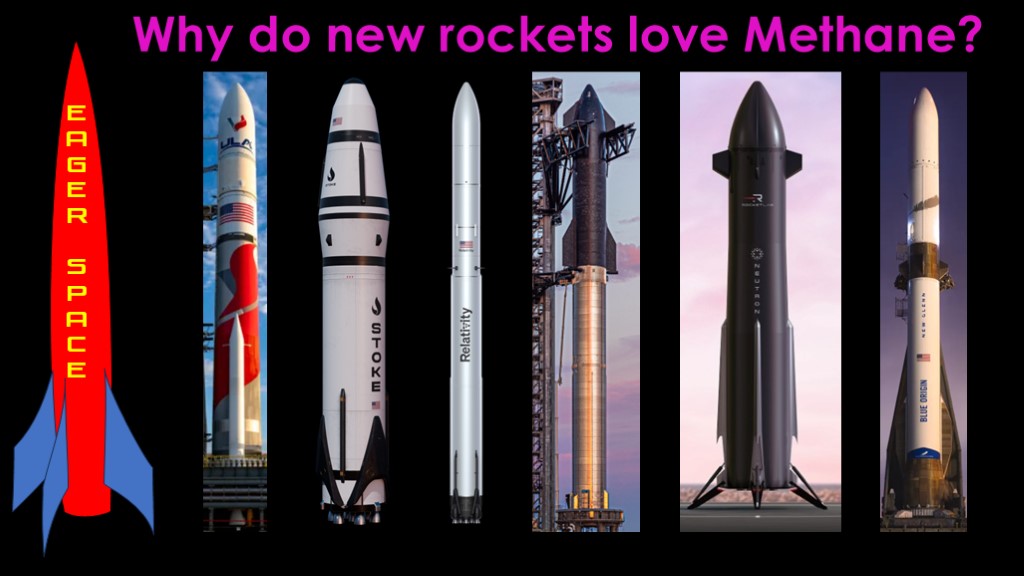
Orbital Aspirations Impulse Density
https://orbitalaspirations.blogspot.com/2011/12/impulse-density.html
You know engineering tradeoff analysis
https://www.youtube.com/watch?v=QmiWTvWdAiA
Defense Logistics Agency list of prices
https://www.dla.mil/Portals/104/Documents/Energy/Standard%20Prices/Aerospace%20Prices/E_2023Oct1AerospaceStandardPrices_231019.pdf?ver=MxFp2P7QThfFoanPm84gDA%3D%3D
GPUs to Mars: Full-Scale Simulation of SpaceX's Mars Rocket Engine
https://www.youtube.com/watch?v=vYA0f6R5KAI
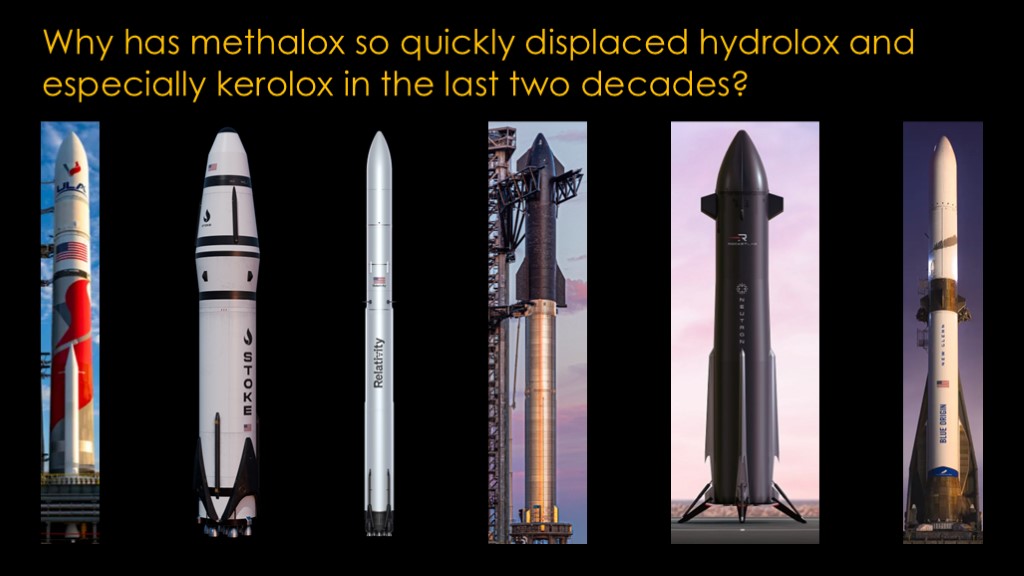
I was recently asked why rockets using methane and liquid oxygen - methalox in rocket jargon - had become so popular recently.
It's a fair question - there are 6 rockets either already flying or under active development that are burning liquid methane, and 20 years ago there were precisely zero.
It turns out there is an interesting story that explains why...

Before we dig into the explanation, we need to understand the phenomena, and that means we need to look at US rocket engine development over the past 50 years.
The RS-25 space shuttle main engine was not surprisingly developed for the space shuttle, and it few in 1981 after a 10 year development cycle. It uses the complex staged combustion engine cycle and is a hydrolox engine burning liquid hydrogen and liquid oxygen. NASA loved hydrogen engines and at the time US engine designers didn't believe that staged combustion kerolox engines burning RP-1 kerosene and liquid oxygen were practical. The RS-25 is definitely one of the two best high thrust staged combustion hydrolox engines ever built, since the only other one is the Russian RD-120 that flew on the Energia rocket.
There was a big lull in engine development until Lockheed Martin needed a new engine for their Atlas III rocket, and they selected the Russian RD-180 engine, an advanced staged combustion kerolox engine. This engine would also power the Atlas V rocket.
McDonnell Douglas needed an engine for their Delta IV rocket, and they went with a new hydrolox engine, the RS-68. It was bigger than the RS-25 but much less complex.
It would be fair to call the 1980s and 1990s a static period in engine development. Mercury, Gemini, and Apollo flew on 5 different vehicles with 7 different engines, but post Apollo, we got the RS-25 and RS-68. Both of these engines came from Rocketdyne - now Aerojet Rocketdyne - and it's important to remember that, as engine manufacturers, they are in the business of selling engines for as much profit as possible.

Then a weird little company built their first rocket. They could not afford Aerojet Rocketdyne prices and AR didn't have a design that worked for their rocket anyway, so they decided to make their own engine. It had to be cheap, easy to develop, and reliable. NASA had just developed a simple kerolox gas generator engine they called Fastrac. The weird company adapted that design to create an engine they called Merlin. A kerolox engine was great for this because there was so much information on how to build those engines - what engineers call prior art.
A few years later, an even weirder company from New Zealand developed an engine called Rutherford for their small rocket. It burned kerolox but used *batteries* to power its turbopumps. Another choice for kerolox because it was so well understood.
SpaceX was planning a much bigger engine known as Merlin 2 in 2010, a gas generator kerolox engine that would have more thrust than the F-1 engine from the Saturn V and would fly on a super heavy lift vehicle. They were also working on an engine they named "Raptor", a hydrolox upper stage engine. Put those two together and you end up with a rocket that looks a lot like the Saturn V.
Neither of those engines would ever be built. Instead, in 2012, raptor became a methalox engine using the highly advanced full flow staged combustion cycle.
About the same time Raptor became a methalox engine, Blue Origin started work on the BE-4 engine, also a methalox design, which would go on to power ULA's Vulcan and Blue Origin's New Glenn.
Rocket Lab also followed the kerolox to methalox progression, choosing methalox for the Archimedes engine powering the upcoming Neutron design.
And then add on the Zenith powering Stoke's Nova and the (eeon R) Aeon R powering Relativity's Terran R.
That's five new engines, all methalox. Why are there so many companies building their own engines, why are they advanced engines, and why are they all choosing methalox?
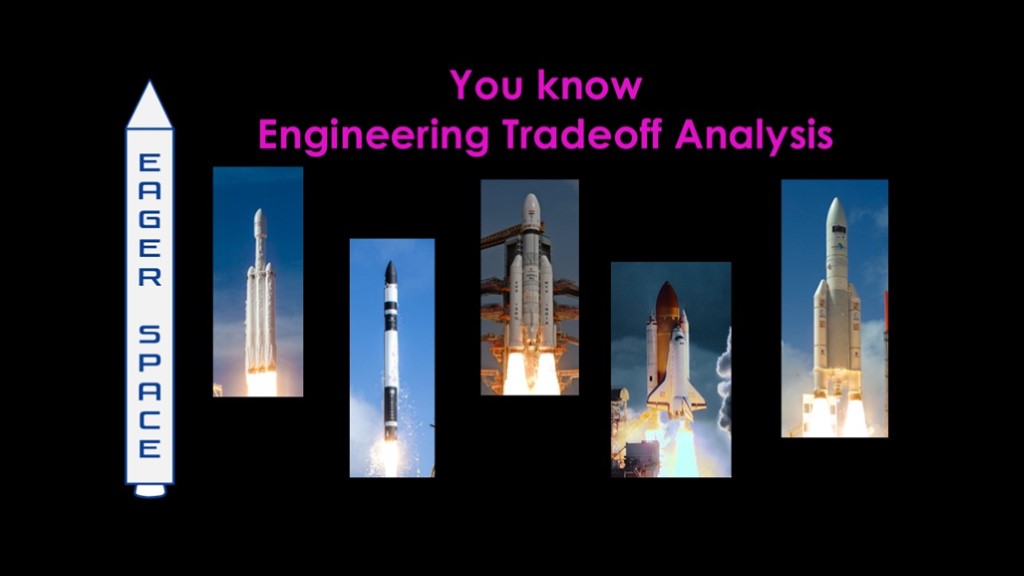
The unsatisfying answer is that a bunch of companies went through their tradeoff analysis and decided that Methalox made more sense than the alternatives, at least for the first stage of their rockets.
You might want to watch this video if tradeoff analysis is a new concept to you.
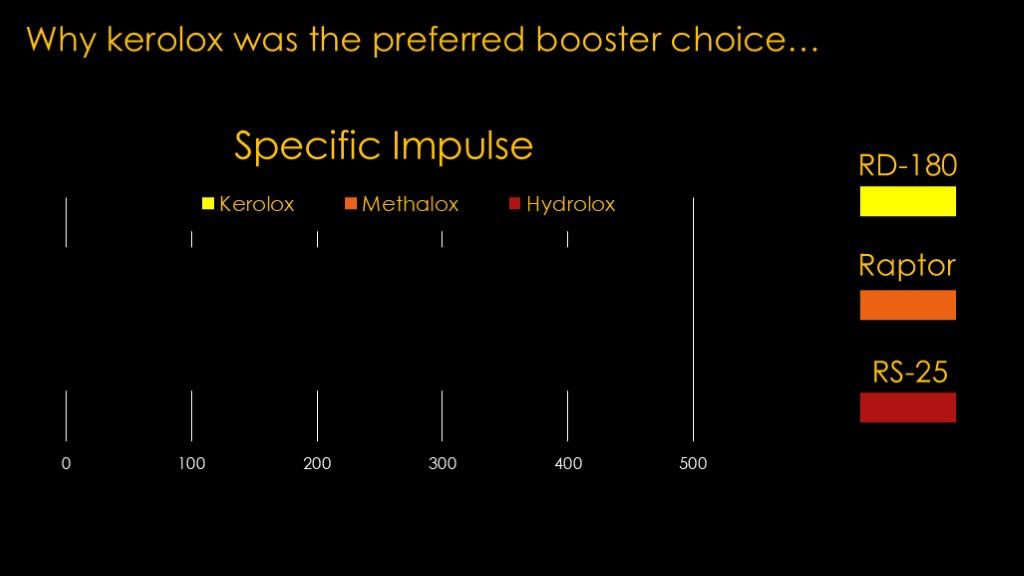
To understand why methalox is now the fuel of choice we need to understand why kerolox was the king of boosters for so long.
Keep in mind that this is a simplistic analysis; in a real trade analysis the engineers would build a detailed model that considers many more factors.
To compare fuels, we need to look at actual engines, and I've chosen the RD-180 engine for kerolox, the Raptor for methalox, and the RS-25 for hydrolox. These are all high performing engines.
The first and most obvious thing to consider is the specific impulse of the engines, a measure of the fuel economy of an engine. Since we are talking boosters, the specific impulse we'll use is the average of the sea level and vacuum specific impulses.
Kerolox and Methalox are a pretty close, with only a small advantage for methalox. The hydrolox RS-25 is about 20% better, a significant advantage.
This is why people get so excited about hydrolox engines.
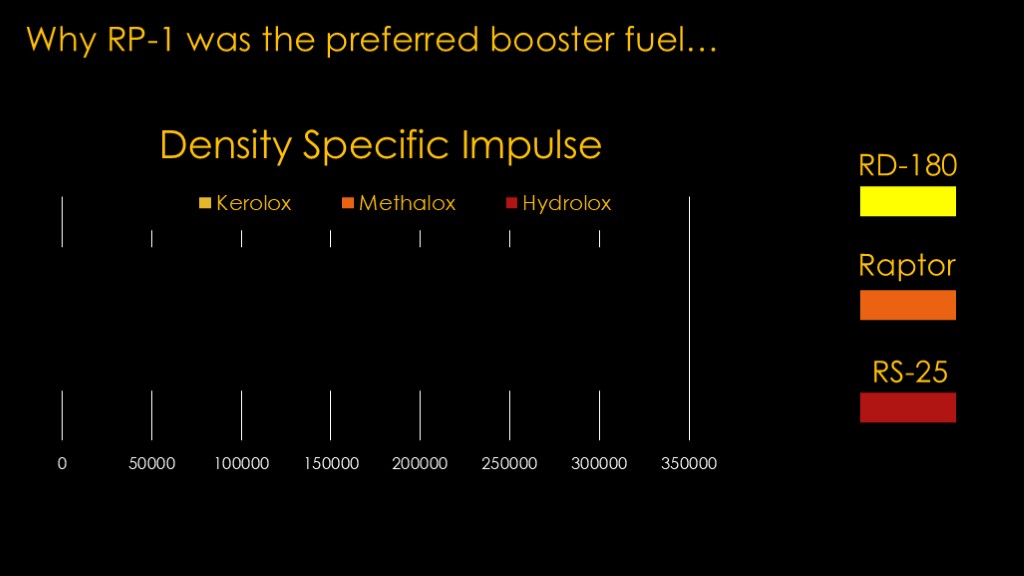
The next measure we'll look at is a measure known as density specific impulse, which is intended to factor in the density of the propellant and therefore the size of the tanks that you need to hold it. Unlike specific impulse - which we can tie directly to engineering formulas - density specific impulse is more of a way of estimating the differences in propellant tank sizes.
What we see is that Kerolox is a little better than methalox, and hydrolox is much worse.
Hydrolox is great because hydrogen atoms are small and light and therefore give great specific impulse. Hydrolox is problematic because hydrogen atoms are small and light and therefore have a low density that means large propellant tanks, high powered turbopumps to move enough hydrogen to produce a lot of thrust, and fuel atoms that want to leak out of everything. It can be a decent fuel choice for upper stages, but it's not a great choice for boosters.
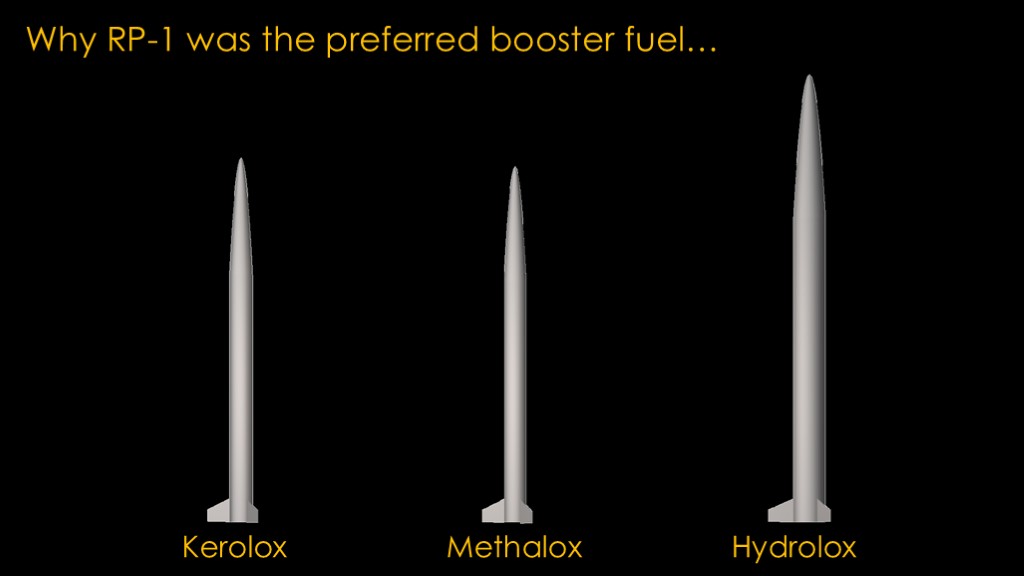
Here's a nice analysis I found that looks at small rockets using different fuels for the first stage and all using hydrolox for the second stage.
The size penalty of the hydrolox design is very obvious, and the differences between methalox and kerolox are mostly a wash.
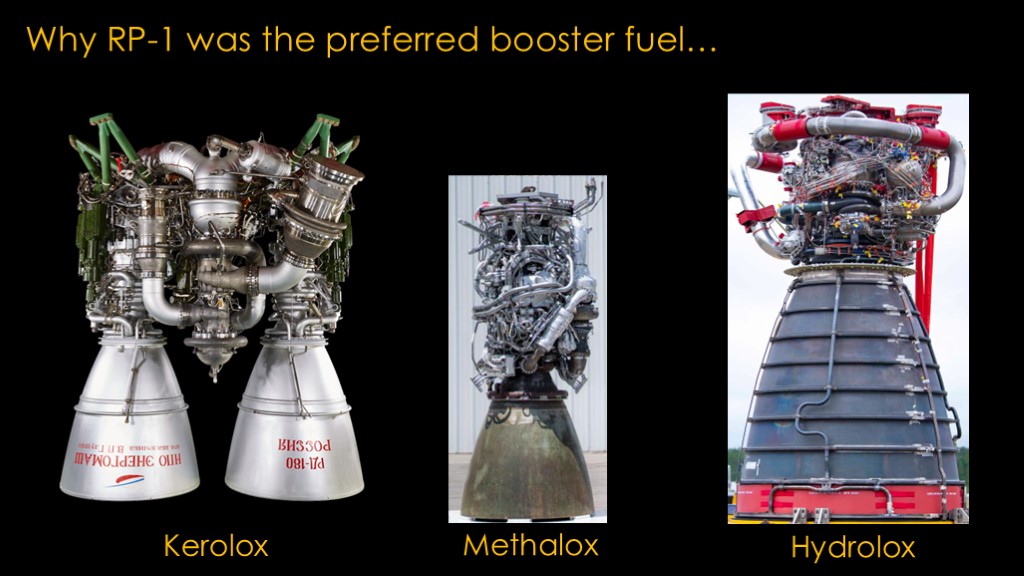
Looking at the three engines at the same scale, the RS-25 is a very complex big brute that has four turbopumps and yet only produces the same amount of thrust as the Raptor 1 shown here. It's really difficult to built a high power hydrolox engine.
The kerolox RD-180 is about twice the size of the Raptor 1 and about double the thrust, so it's pretty much a wash between kerolox and methalox again.

To summarize, RP-1 was the king for some very good reasons.
If you looked all the tradeoffs, it was pretty close to methane but there were tons of examples of kerolox engines that you could build on.
Kerolox was much less risky.
So, what changed?

The biggest factor was this, in December of 2015.
That was - to steal a phrase from James Burke - the day the rocket universe changed.

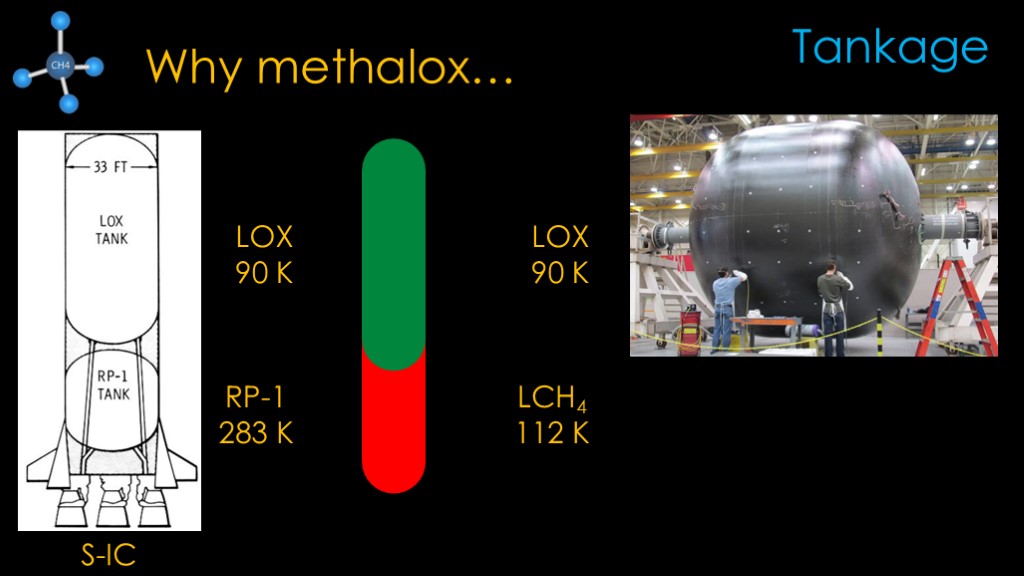
It's time to enumerate the advantages of methalox.
The first has to do with tankage. Because RP-1 is a lot denser than liquid methane, it has tanks that are smaller, though the improved specific impulse of methalox erodes some of that advantage.
There is a somewhat subtle issue with kerolox propellant tanks. The liquid oxygen is very cold, only about 90 kelvin, while the RP-1 fuel is at room temperature, about 283 Kelvin. If you put the two of those in contact, the RP-1 wants to vaporize the LOX and the LOX wants to freeze the RP-1.
For the Saturn V first stage, NASA dealt with this by having two separate tanks so that there is less heat transfer. That is unfortunately the heavy option.
What you would like to do is use a common dome design, where the bottom of the upper tank is the top of the bottom tank. That saves considerable weight but makes the heat transfer problem worse. For the second stage of Falcon 9, SpaceX had to come up with a mission extension kit that - among other things - ensures the propellants stay liquid for longer duration missions.
If liquid methane is used, it has a temperature of about 112 Kelvin - much closer to the temperature of liquid oxygen - and that reduces the impact of this issue considerably.
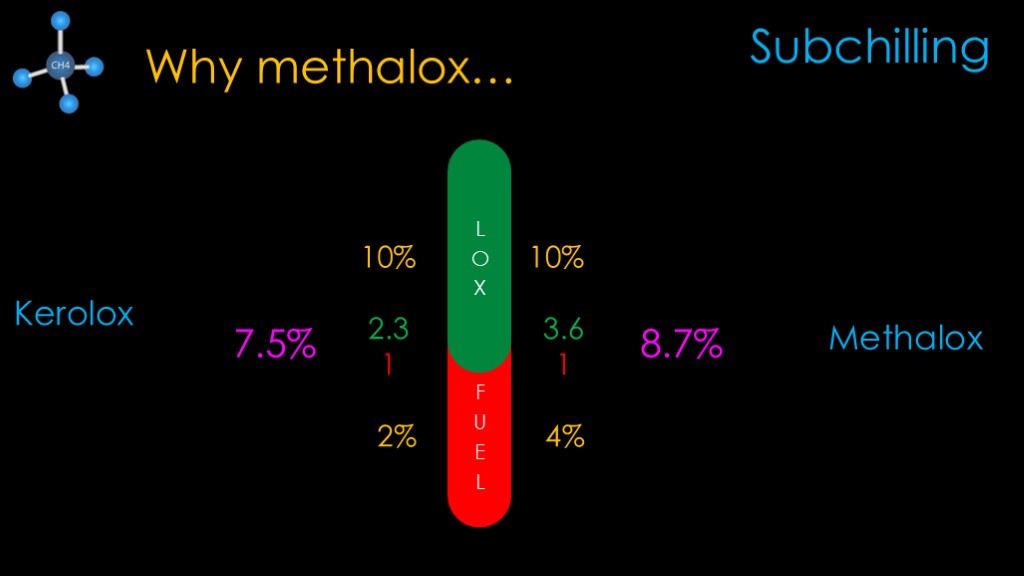
For both Merlin and Raptor, SpaceX using subchilling of the propellants, cooling them below their usual temperatures. That makes them denser and allows more propellant to be packed into a given volume.
Liquid oxygen can be cooled a lot, and that reduces its volume by about 10%. RP-1 gets gummy if you cool it too much, so 2% is a reasonable estimate, and liquid methane can reduce its volume by about 4%.
But we need to remember that most of what these engines burn is liquid oxygen. Kerolox engines burn about 2.3 parts by mass of liquid oxygen to one part RP-1, and methalox engines burn about 3.6 parts liquid oxygen to 1 part liquid methane.
If we go through and calculate based on the mixture ratios, we find that subchilling gives us 7.5% more propellant for kerolox and 8.7% for methalox, a 1.2% improvement. That's not a huge difference, but it's a factor that favors methalox.

Another factor is design difficulty.
When RP-1 was king, design difficulty massively favored RP-1 designs because there was so much prior art that you could lean on, and that priori art had been painfully gathered through a lot of hard work developing previous engines.
NASA had decided on hydrolox for the space shuttle main engine, and that meant that the existing RP-1 engine experience wasn't terribly useful.
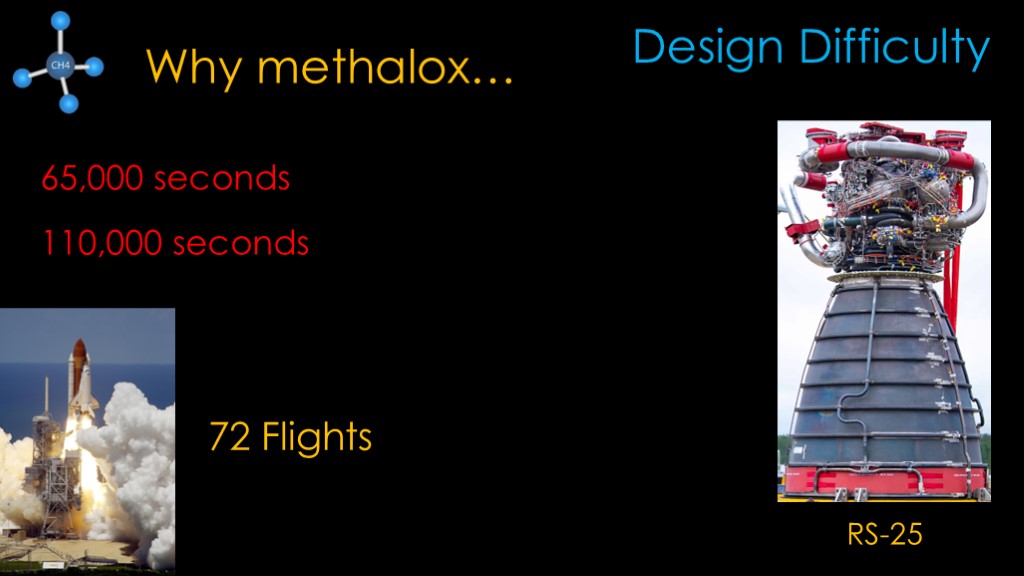
The hydrolox RS-25 was a very innovative engine for its time and considered quite risky; NASA therefore required that the engine have at least 65,000 seconds of testing before the first flight, and it actually reached over 110,000 seconds of testing before STS-1.
During flight, the engines run for only about 510 seconds, so with three engines the pre-flight testing amounted to about 72 shuttle flights.
It was a very hard engine to develop with 1970s technology and tools, made harder because of the choice of hydrolox and the high power levels required.
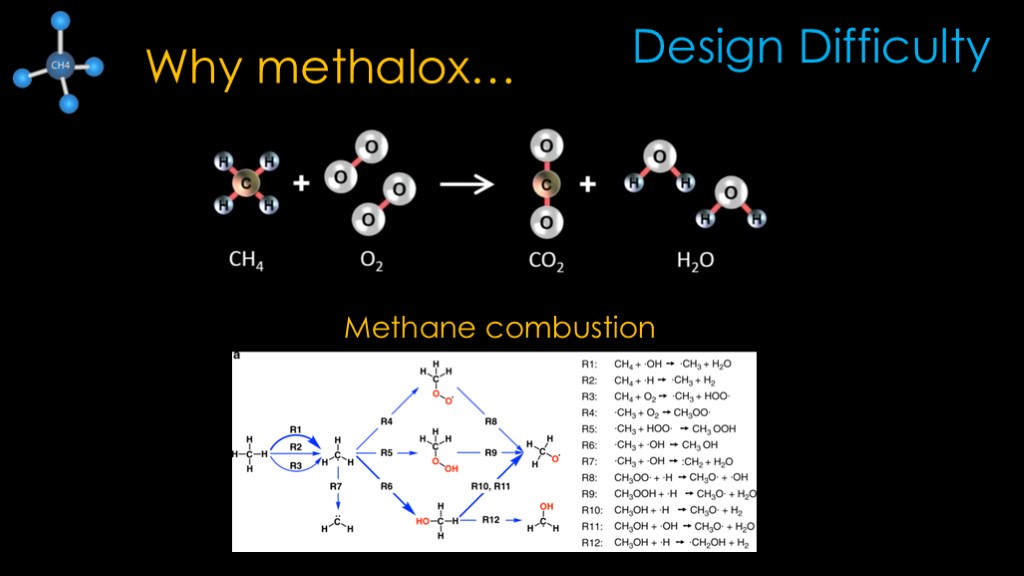
One of the reasons to choose methalox is that methane combustion is simple = a molecule of methane plus two oxygen molecules gives you a carbon dioxide molecule and two water molecules. At least that's the way I learned it...
But it turns out that that isn't actually the way the chemistry and physics work. There are many different ways methane combustion can proceed, with over 50 intermediate products and over 300 possible reactions. It's a complicated world.
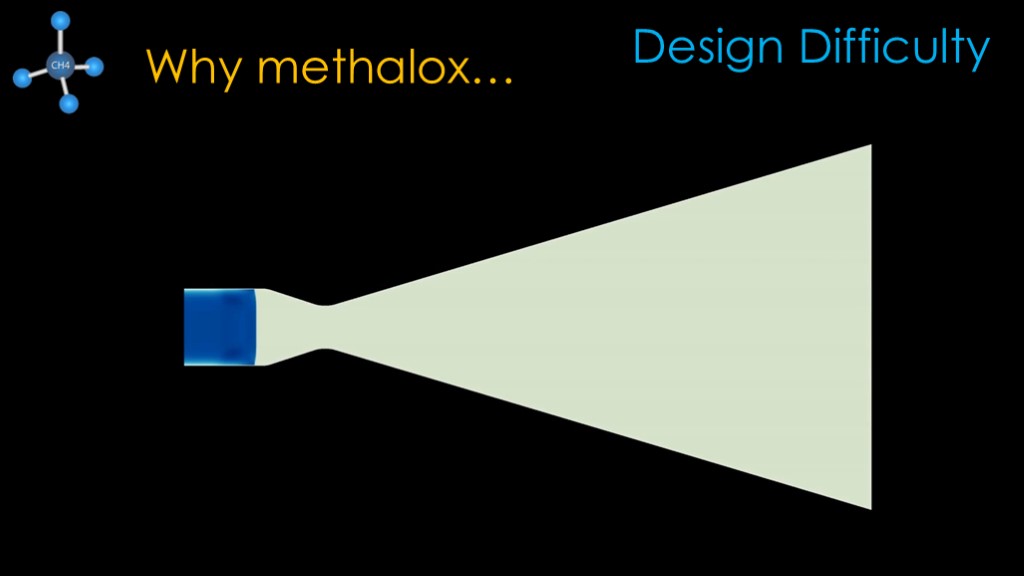
But the world of engine design today is very different than before. In the 1970s it was "come up with a design, test it to find out what the issues are, and then change the design".
But in today's world, we have computational fluid dynamics simulations like this simulation of Raptor, which was created on a single computer over a weekend. In 2016.
These simulations allow designers to try out many engine variations and have a decent idea about how an engine will perform before it ever hits a test stand.
I believe this is a major reason why so many small companies are developing their own engines - the new simulation tools make it easier and quicker to develop a reliable engine.
The RS-25 took about 10 years to develop with a skilled engine company and NASA working together.
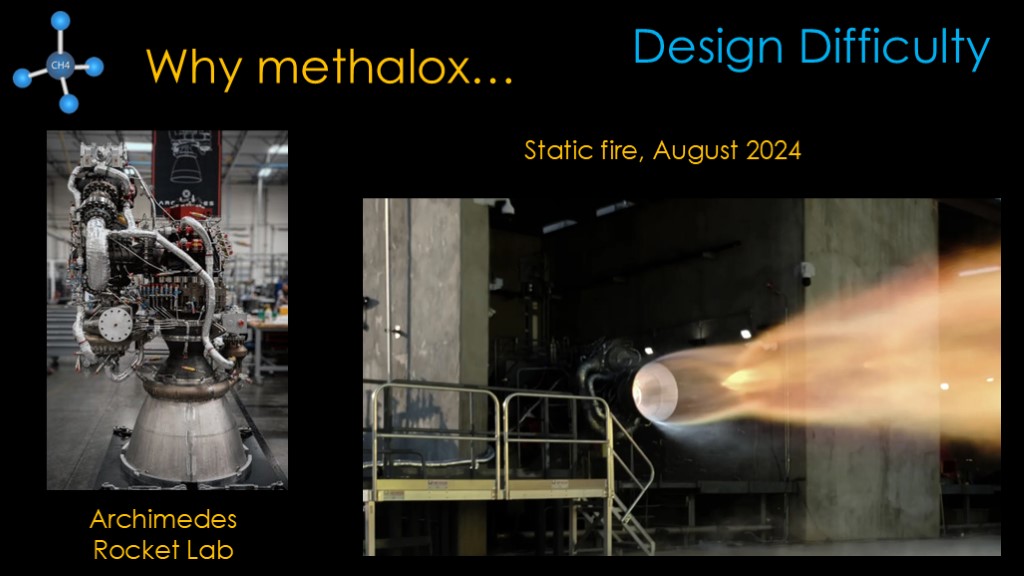
Rocket Lab announced the development of their Archimedes methalox engine in December of 2021.
In August of 2024, they performed a static fire test on a version that Peter Beck characterized as a "flight-ready" version.
Less than 3 years is a very short time to develop an engine, and that included a change from a simple gas generator design to the far more complex staged combustion design. And getting to a flight-ready version before the first static fire is pretty much unheard of.
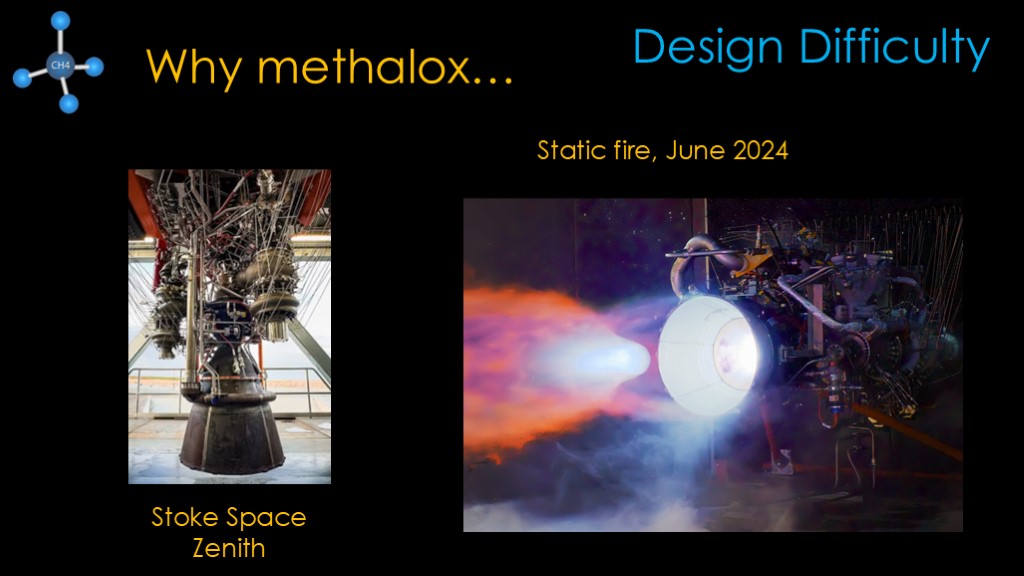
Stoke Space is another example. They reportedly started development of their Zenith methalox engine back in late 2022, and did a test fire in June of 2024. 18 months is even shorter than the Archimedes development time, and to make it more impressive, they are using the full flow staged combustion design that is only used by Raptor.
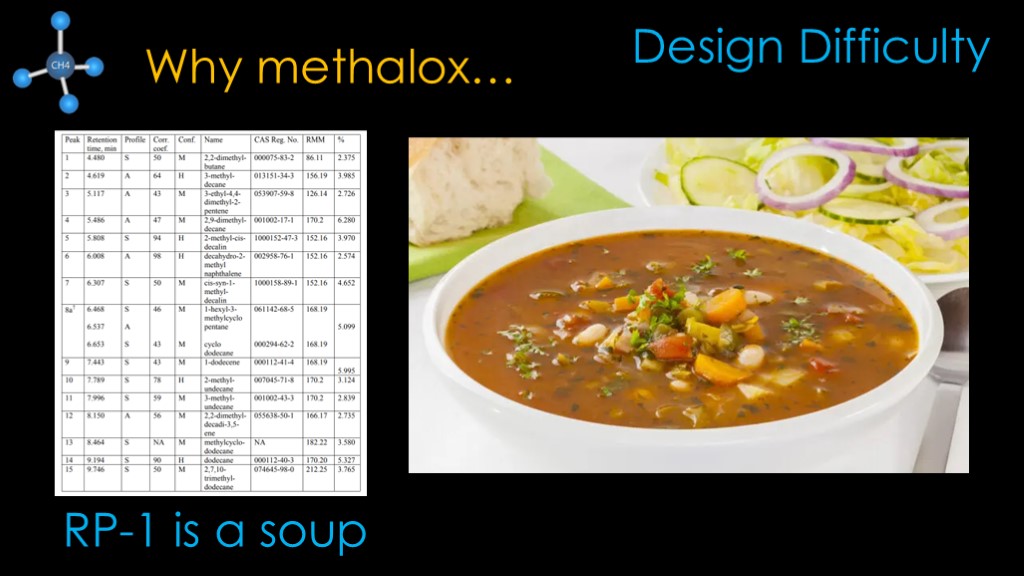
Can this same technology be applied to RP-1 engines?
Theoretically, yes, but RP-1 is a soup of many different components. It would be possible to get a list of all of them and do the same sort of simulation that has been done for methalox, but it would be much more challenging.
Then you have to deal with the fact that the exact RP-1 composition differs from batch to batch and supplier to supplier.
Why not make your life easier and just do a methalox engine instead?
It's easier, faster, and more robust to develop methalox engines compared to RP-1 engines.
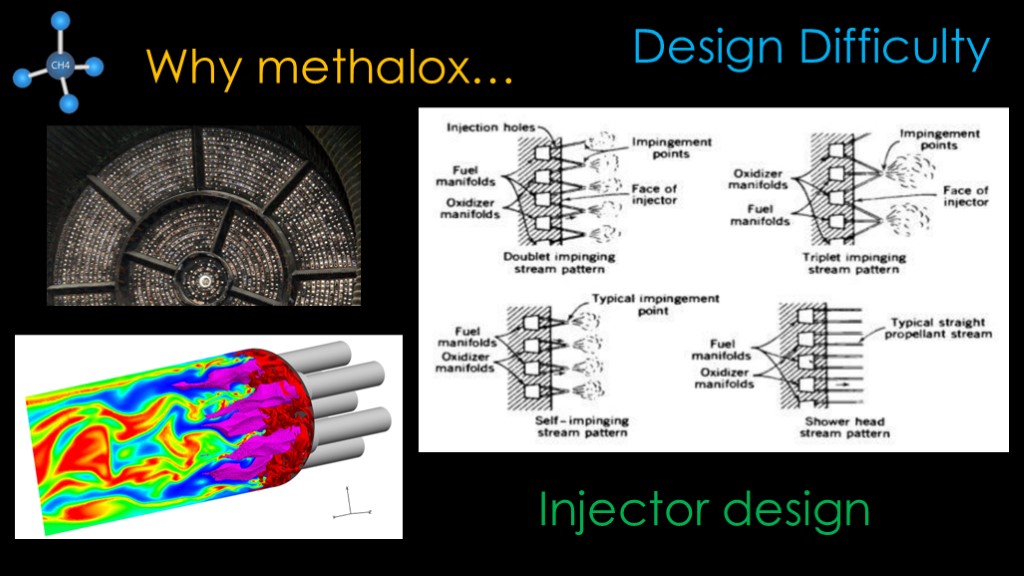
The last advantage for *some* methalox engine designs is better combustion.
One of the black arts in rocket engine design is the design of injectors. The point of the injector it to get the propellants into the combustion chamber and mixed as quickly as possible. In kero lox engines the fuel is always injected as a liquid, and it takes a good injector design to get effective mixing of the fuel with the oxygen. The giant F-1 engine that powered the first stage of the Saturn V rocket was very hard to develop because it had unstable combustion, and it took considerable work to figure out an injector design that worked well.
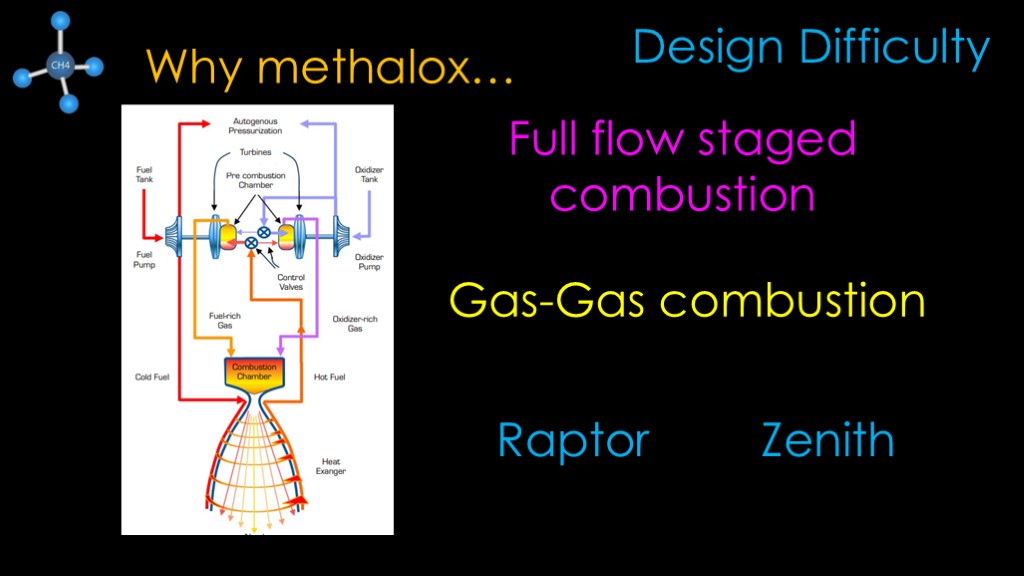
If your engine uses the full-flow staged combustion design - one where all the propellants go through preburners that convert them to gas - that means there are no liquids entering the combustion chamber.
This is known as "gas-gas" combustion. Gases mix much better and quicker and they are already warm, and that allows simpler injector design, better mixing, and quicker combustion. That enables a smaller and therefore lighter combustion chamber and simplifies the simulation of combustion.
Two of the mentioned engines use full flow staged combustion - the Raptor that flies on Starship and the Zenith which will power the first stage of Stoke Space's Nova vehicle.
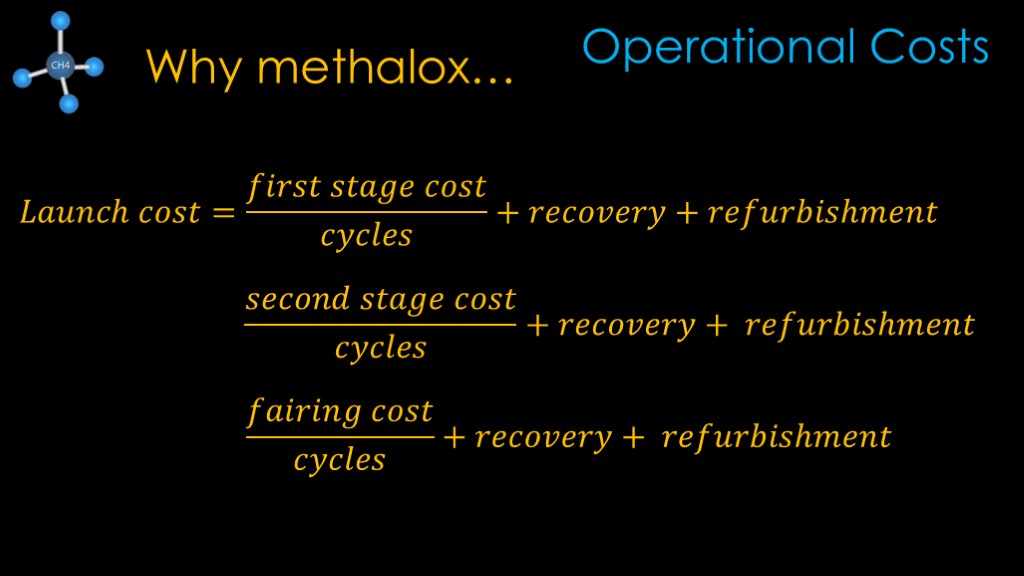
Moving onto operational costs, the existence of reuse has changed the trades significantly.
In general, the launch cost of a rocket is the first stage cost divided by the number of times we expect to fly it - usually known as "cycles" in the aircraft world - plus the cost of recovery and refurbishment. Plus the same costs for the second stage and fairing.
In the expendable world, cycles is always 1 and there is no refurbishment, so it's just the cost of the rocket.
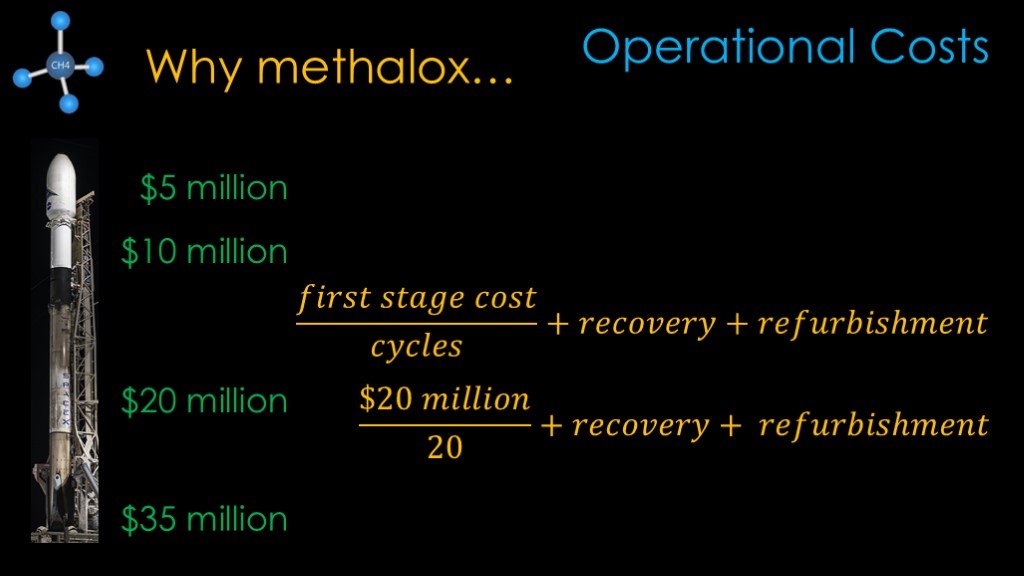
Let's look at an example. Here are some estimates for the cost of a Falcon 9 in expendable mode, with $20 million on the first stage, $10 million on the second, and $5 million on the fairings. These aren't actual costs but they are in the right ballpark.
That gives us $35 million as a ballpark estimate for the total incremental cost.
But that changes a lot if we start reusing first stages. If we can fly our $20 million first stage 20 times, the construction cost now becomes a minor part of the cost of the first stage, and first stage cost is dominated by recovery and refurbishment.
I'm not going to talk about recovery as that cost doesn't depend on the fuel you use, but it is interesting to talk about refurbishment.
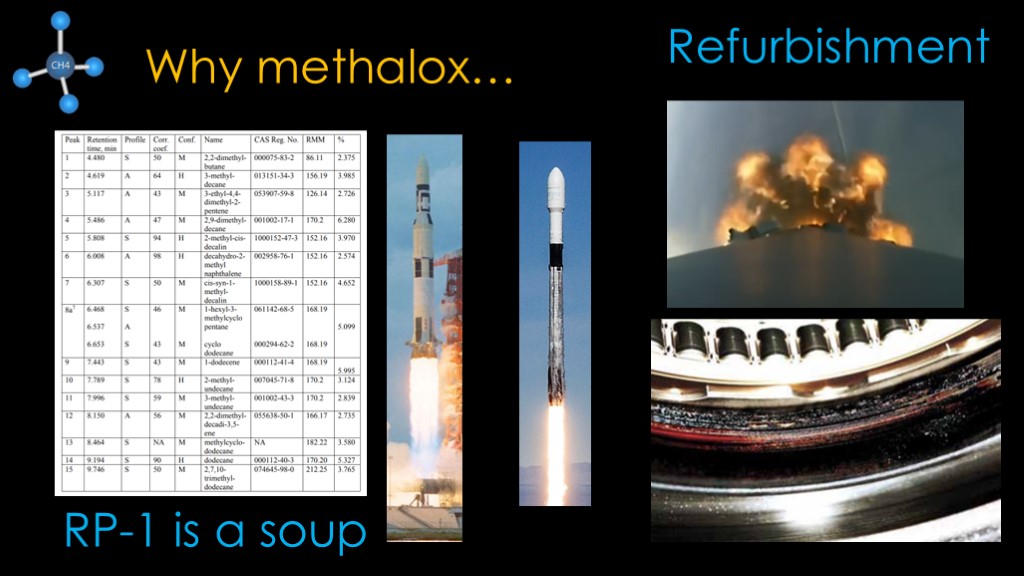
As I said before, RP-1 is a soup, and when you burn soup, it doesn't burn very completely.
This is why RP-1 engines like the F-1 used on the Saturn V and the Merlin used on the Falcon 9 have very visible exhaust trails - particles that didn't burn in the combustion chamber or nozzle burn when they hit the air. When the first stage is close to staging and there is much less atmosphere, those unburned particles - generically known as "soot" - can be seen very clearly in the exhaust plume. You can see this before staging in the Falcon 9 first stage video and after staging in the second stage video.
Those unburned particles gunk up the engine passages. This picture shows what happens inside an aircraft engine, and similar problems occur in rocket engines, where the issue is known as "coking". If you want to reuse RP-1 engines, they need to be cleaned to get rid of the gunk, and that takes time and money.
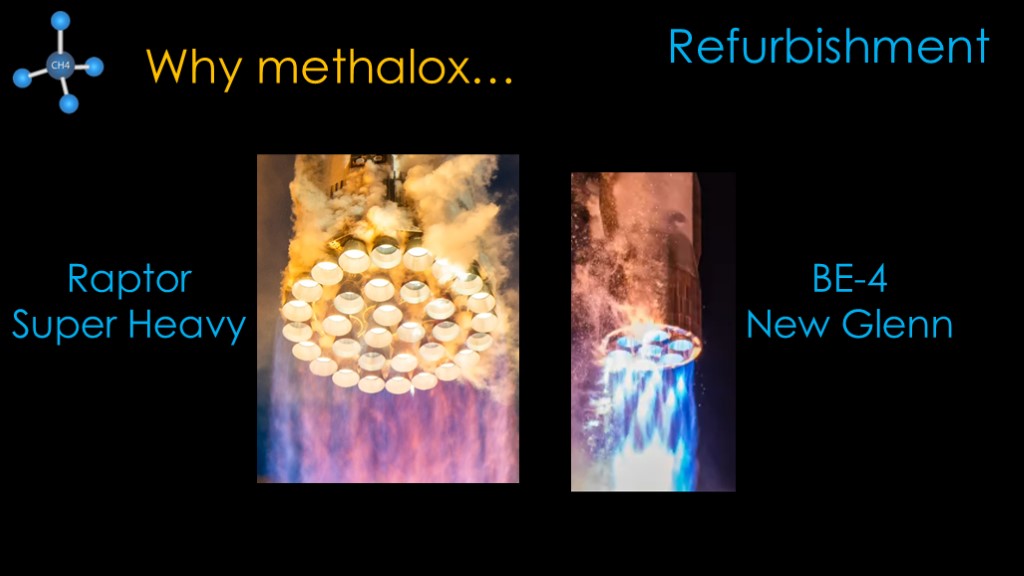
Methane is a simpler compound and the combustion is much less complex, so the majority of the combustion occurs in the combustion chamber. In these ground views of the Raptor and BE-4 engines in operation, the combustion is so clean that we can clearly see the inside of the nozzles.
The clean burning will reduce or eliminate the need for post-flight cleaning. If you want a reusable rocket stage, choosing a fuel that has that advantage will make a significant and lasting impact on the cost of doing business. You not only spend less money on cleaning but you can refly stages more quickly and that means you don't need to build as many.

A final factor is propellant cost.
Propellant costs are very hard to nail down as they are commodities and commodity prices fluctuate considerably, there are volume deals, etc. Consider the following as example costs...
Falcon 9 holds about 364 tons of LOX and at $270 per ton that's a total of around $100,000
It holds about 160 tons of RP-1 @ $2300 per ton for a total of $370,000, for a grand total of about $470,000. That's about 1.3% of the total cost, and we can therefore conclude that the propellant cost doesn't matter in the expendable case. If you totally eliminated propellant costs, it would barely change your overall cost.

Now let's look at the first stage reuse case. Let's say that we can fly the booster 20 times and the fairings 5 times. That bumps the price of each of them down to $1 million per flight and our total cost down to $12 million. That bumps the propellant costs up to about 4% of the total. Starting to get interesting, but not really significant.
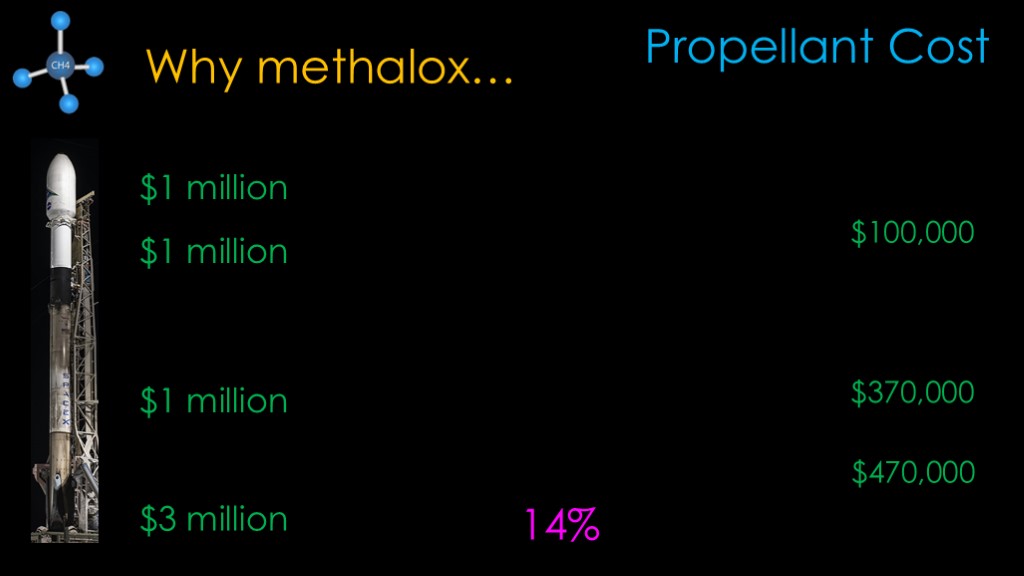
If you are flying a fully reusable launcher, your total cost might get down to $3 million, and at that point the propellant cost is up to 14% of the total cost. Worth caring about at that number.
That's the state if you use RP-1. What does methalox look like.
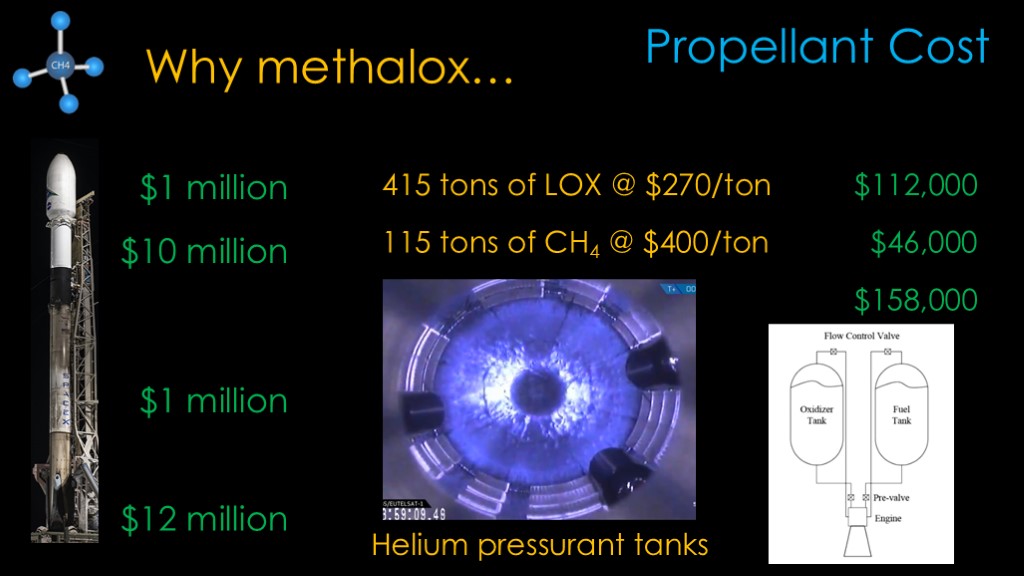
Looking at the first stage reuse scenario.
I'm going to ignore the specific impulse advantage of methalox and assume we carry the same amount of propellant. A methane engine has a higher mixture ratio - it burns more LOX for a given amount of fuel - than a kerolox engine so we end up with $112,000 for the LOX. Liquid methane is hard to price because it's not a real commodity in the quantities used by rockets, but you can buy liquid natural gas for $400 per ton and it's likely you can get to that level for liquid methane if you buy a lot, so that's the number I'm going to use. Musk has said that they pay only $100 per ton, so feel free to redo the calculations with that number if you wish.
At $400 per ton, we get $46,000 for the liquid methane, for a total of $158,000 or about a third of the cost of the RP-1 rocket scenario.
And there's another strike against RP-1 when it comes to cost. For RP-1, you need a gas to pressurize the tanks, and the most common - and most performant - choice is helium.
You don't need a lot, but helium is really expensive - roughly $90,000 per ton at current rates. Musk has said they pay as much for the helium Falcon 9 uses as they do for the LOX, so the RP-1 total consumables cost is closer to $570,000, and the methalox version is only 28% the cost. Helium is a rare element that only comes from natural gas and therefore the ultimate supply is limited.
Avoiding helium requires you to use what is known as "autogenous pressurization", where you convert the propellants to gas and use that gas to pressure the tanks. Definitely a more complex design, but simpler from the operational perspective.
Propellant costs don't matter when you fly fully expendable, and as you add reuse they start to have a small impact. If you have a full reuse architecture without significant recovery costs, then propellant costs can become significant.
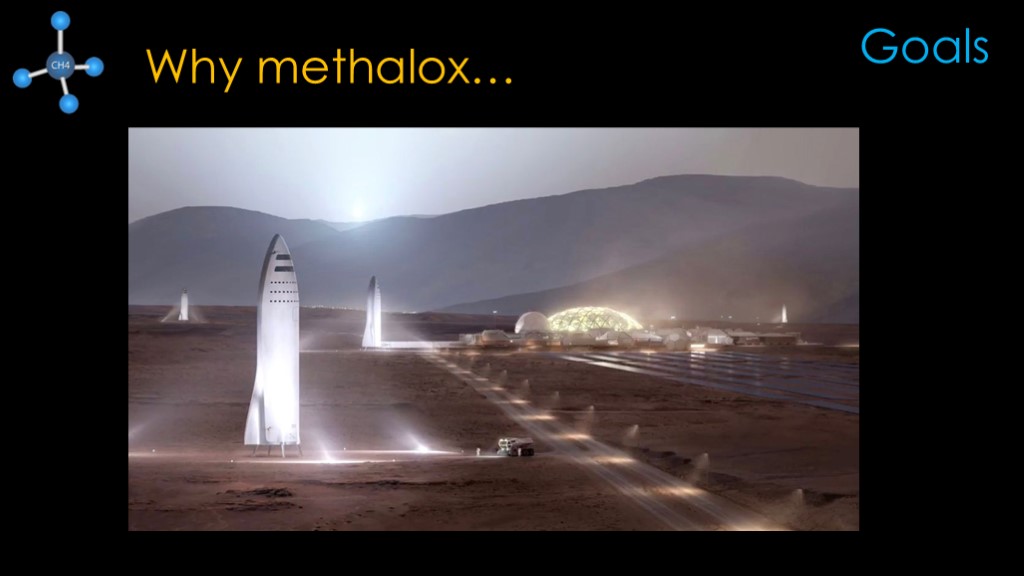
A final factor - at least for SpaceX - is Mars. If you want to settle Mars, you need a propellant that can last for the journey to mars - so you can land - and one you can make on the surface.
RP-1 isn't very good for either of those scenarios, which leaves you with either hydrolox or methalox. Hydrolox is easier to make on the Martian surface, but apparently SpaceX has looked at all the remaining scenarios and has decided that methalox is a better choice.

Why has methalox taken over?
It's much easier to do simulations of methalox combustion compared to kerolox combustion, and that makes design easier
It avoids the coking issues of RP-1 combustion and that makes reuse much simpler
Liquid methane is considerably cheaper than RP-1 and you don't need expensive helium to pressurize your tanks
I've only talked about US engines, but there are methalox engines under development by Avio and Pangea in Europe, ISRO in India, and Landspace in China.
And that's the story of why methalox has taken over.

If you enjoyed this video, here's your song of the day...
But only sing two thirds of the relevant line...